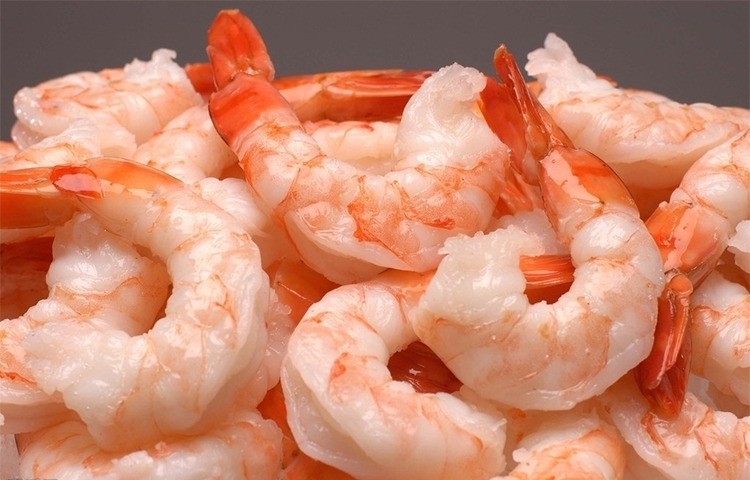Drunken River Shrimp – Zhejiang’s Classic Shaoxing Flavor
Introduction:
Imagine sitting by a willow-lined canal in Jiangnan as a glistening plate of Drunken River Shrimp arrives—tender shrimp infused with a subtle Shaoxing wine lees aroma, melting on your tongue. This Zhejiang classic dates back to the Ming and Qing eras and showcases the region’s love of fresh, delicate seafood and fermented-wine flavors. Whether you’re a foodie or a cultural traveler, this dish is a delicious introduction to Jiangnan cuisine.
1. Origin and History: From Fishermen’s Wisdom to Culinary Classic
Drunken River Shrimp can be traced to Ming and Qing times in Zhejiang, where local fishermen used wine lees (the leftover solids from rice wine) to preserve and flavor river shrimp. The lees acted as a natural preservative and added a mellow, fermented aroma. Over time this pragmatic method evolved into a refined dish in Zhejiang cuisine and became common at banquets. Historical records note that Qing-era literati often enjoyed these shrimp with a glass of Shaoxing wine, cementing the dish’s link to local drinking culture and Jiangnan’s leisurely lifestyle.
2. Cultural Significance: Zhejiang Cuisine and Jiangnan Charm
This dish embodies key characteristics of Zhejiang cuisine—freshness, tenderness, silkiness and subtle aroma. It appears at family gatherings, festivals and formal banquets, symbolizing hospitality and celebration. The use of wine lees reflects China’s sophisticated fermentation traditions and Zhejiang’s famous Shaoxing wine culture. Eating Drunken River Shrimp in Jiangnan is like walking through the region’s refined aesthetic: simple, elegant and deeply rooted in local life.

3. Key Ingredients: Fresh River Shrimp and the Soul of Wine Lees
Fresh river shrimp are the foundation—ideally peeled from live local shrimp to keep the flesh firm and sweet. Shaoxing wine lees (jiu zao) are the dish’s soul, offering gentle winey sweetness and an aromatic depth that removes any fishiness. Egg whites and starch create a light coating that keeps the shrimp silky; scallion, ginger, cooking wine, salt and sugar round out the seasoning. For the most authentic flavor, look for Shaoxing lees from Zhejiang or high-quality fermented rice products.
4. Cooking Process: A Delicate, Fast Technique
Making Drunken River Shrimp emphasizes timing and gentle technique. Four main steps: marinate, coat, quick-fry, and finish in the wine lees sauce. Marinate peeled shrimp briefly with salt and cooking wine (about 10 minutes). Lightly coat with egg white and starch to protect the shrimp’s texture. Heat oil to medium-high and quickly stir-fry shrimp until they turn opaque, then remove. Sauté scallion and ginger in the residual oil, add wine lees, a splash of cooking wine, salt and sugar to form the sauce, and return the shrimp for a quick toss so each piece is evenly coated. Speed preserves the shrimp’s bounce and the lees’ aroma.

5. Flavor and Texture: Tenderness Meets Fermented Aroma
The result is silky, springy shrimp with a clean sweetness and a refined fermented-wine aroma—subtle, not overpowering. The lees provide a mellow, slightly sweet-and-sour note that unfolds as you chew, creating layered flavors without greasiness. This light, refreshing profile typifies Zhejiang’s “clean and delicate” approach to seafood—perfect if you enjoy seafood and mild fermented tastes.
6. How to Enjoy: Pairings and Dining Scenes
Drunken River Shrimp is versatile. As a main course, it’s excellent with steamed white rice that soaks up the sauce. As a shared plate or drinking snack, it pairs beautifully with Shaoxing wine or a light beer. In formal banquets it appears alongside other Zhejiang specialties such as Dongpo pork or Longjing shrimp. For the best experience, try it in a reputable Zhejiang restaurant in Hangzhou or Shaoxing, and consider visiting in spring or summer when river shrimp are at their plumpest.

7. Tasting Tips for Travelers
Choose established local restaurants known for Zhejiang cuisine—places like Hangzhou’s historic eateries or long-standing Shaoxing taverns maintain traditional methods. Ask the server when the shrimp were sourced and whether the lees are local Shaoxing lees for the most authentic aroma. The dish is best eaten immediately; the texture changes as it cools. Note: wine lees contain trace alcohol that mostly cooks off, but if you are highly sensitive to alcohol, mention this when ordering.
8. Easy Home Version: Recreate Jiangnan Flavor Abroad
You can try a simplified home version using frozen peeled shrimp and store-bought wine lees (available at Asian groceries). Marinate shrimp for 10 minutes with salt and cooking wine, coat with egg white and cornstarch, then quick-fry until pink. In the same pan sauté minced scallion and ginger, add 2–3 tablespoons of wine lees, a little cooking wine, salt and sugar to taste, then return shrimp and toss briefly. Keep the heat moderate to avoid overcooking. This approachable recipe brings Zhejiang flavor to your kitchen.

Conclusion:
Drunken River Shrimp is more than a dish; it’s a taste of Zhejiang’s history, fermentation tradition and Jiangnan elegance. From humble fishermen’s origins to banquet tables, its tender shrimp and delicate wine lees aroma make it a must-try for visitors. Whether dining in Zhejiang or trying the home recipe, this classic promises a memorable culinary glimpse of southern China.


